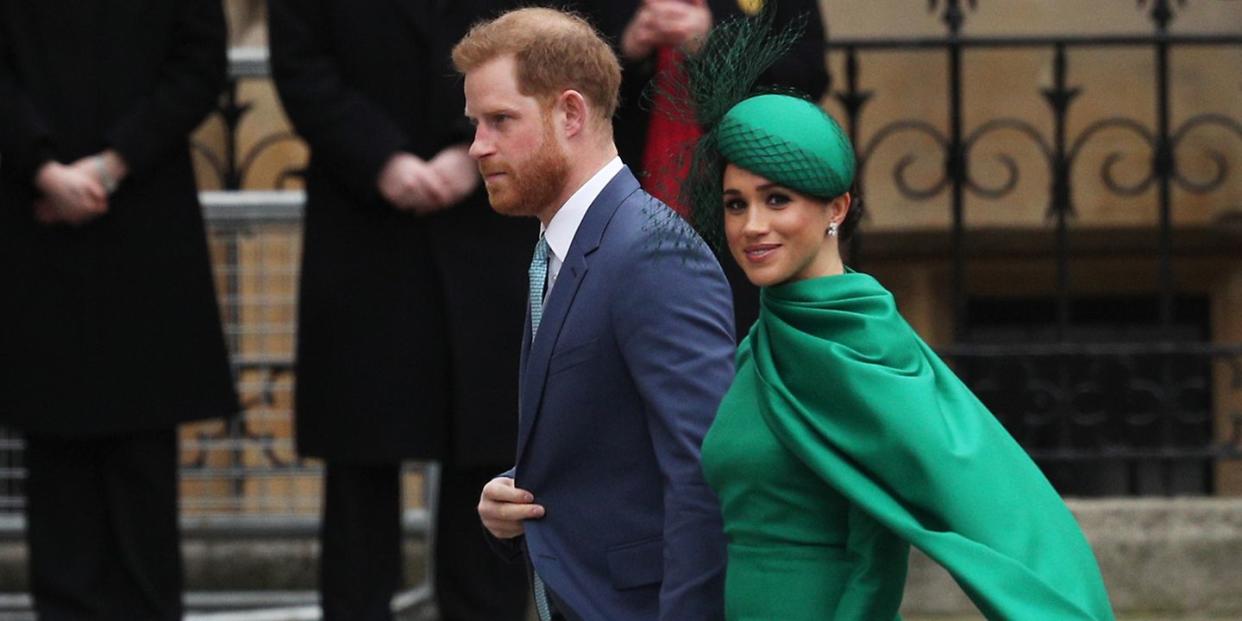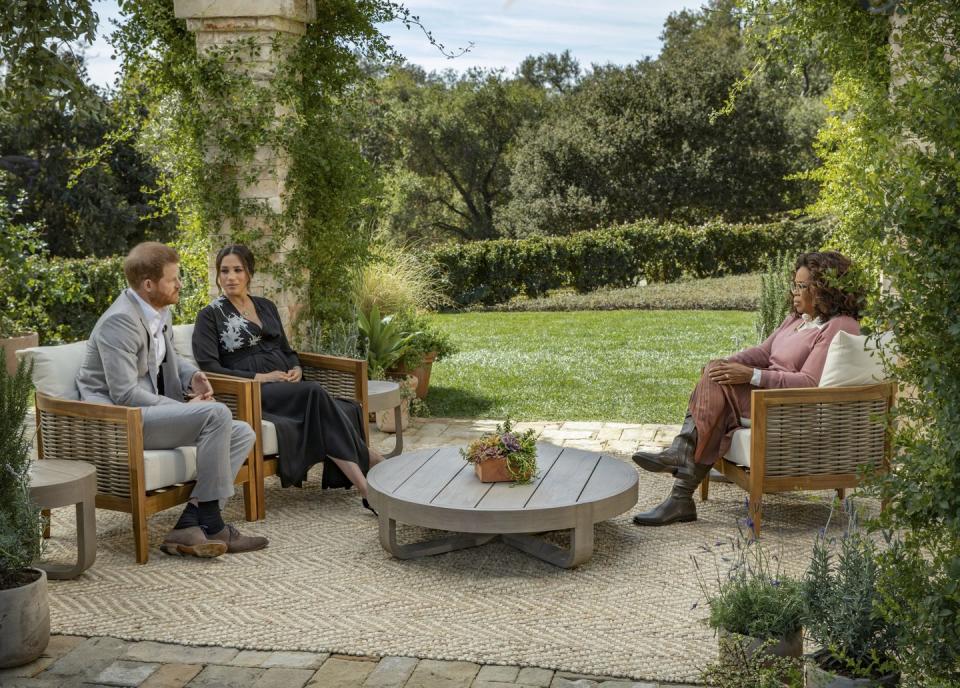Stifling, Toxic and Racist—Duchess Meghan Never Had a Chance at The Palace

I remember the feeling of frustration well. My work on an extensive biography of the Duke and Duchess of Sussex, Finding Freedom, was coming to an end. After hearing countless stories from multiple people close to the couple about how they felt unsupported and unprotected by the institution of the monarchy, it was time to address the matter with the palace side. A chance for them to respond.
“This is nonsense. … We did absolutely everything [for Meghan],” the senior aide told me over the phone. I asked for examples. “Everybody welcomed her, and she was given all the support she needed,” they continued. I asked again. “They forget how accommodating we were when it came to navigating the duchess through her first steps [as a working royal],” the aide added, somewhat curtly. I had several conversations like this over the weeks that followed—each party, be they from Clarence House, Buckingham Palace, or Kensington Palace, for the most part seemingly baffled by the Sussexes’ grievances. Finally, I took what I had and moved on.
Well over a year has passed since these calls, and the full severity of Harry and Meghan’s situation has finally been laid bare. Sitting in front of Oprah Winfrey, the duchess tearfully opened up about her darkest days as a working member of the royal family. Unprotected, undefended, and left to face a near-daily barrage of hateful commentary and negative stories, Meghan revealed how her circumstances had, at times, seen her virtually stuck indoors for weeks on end. Lunch with friends could have momentarily lifted her spirits, but social outings were dismissed by royal family members and aides who said it would be better to lie low. Her image was “everywhere right now,” they told her. Her isolated existence stood out in particular to her worried mother, Doria Ragland, who during a summer 2019 visit to Frogmore Cottage was surprised to discover that neither she nor her daughter was able to go out into Windsor town to pick up coffees. “You’re stuck in here,” Doria told Meghan at the time, according to a source.
The Oprah interview was the world’s first time hearing Meghan describe the true toll of the palace’s “no comment” policy when it came to dealing with inaccurate press coverage. One report that caused Meghan particular upset was the November 2018 allegation that she’d made the Duchess of Cambridge cry during a children’s bridesmaid dress fitting for her Windsor Castle wedding. Though the palace knew the claims were untrue (and that it was, in fact, Kate who made Meghan cry), Meghan was repeatedly told that it would not be possible to set the record straight, despite it being a story that fed into a stereotype-laden narrative. Other royal family members were often afforded more sympathetic support when it came to dealing with inaccurate press (officials even issued a statement to deny Kate’s use of Botox in July 2019), but both Harry and Meghan felt they did not have access to this same privilege.

The couple’s exasperation came to a head in January 2020, when Kensington Palace urgently requested that Prince Harry cosign a statement against an “offensive” newspaper report stating Prince William “constantly bullied” the Sussexes before their decision to step away. “Well, if we’re just throwing any statement out there now, then perhaps KP can finally set the record straight about me [not making Kate cry],” Meghan emailed an aide, asking why side of the story public image was never considered important to anyone. But, as with many requests made by the couple, her suggestion was ignored. The Duchess of Cambridge, she was told, should never be dragged into idle gossip.
Meghan’s state of well-being deteriorated as the institution refused to defend or protect her during her toughest moments. Talking to Oprah, Meghan revealed that her mental health was so fragile during her pregnancy that she “didn’t want to be alive anymore.” She turned to senior staff—including the palace’s own HR department—but her plea for help in January 2019 was repeatedly shut down. It’s not a good look for the family, she was told. Even friends who wanted to help her or speak up in her defense were regularly reminded by palace aides to keep quiet. As the cruel commentary, racist attacks, death threats, and negative tabloid stories piled up—and the institution continued to ignore the problem—Meghan later likened the experience to a friend as “death by a thousand cuts.” Her reference to an ancient Chinese execution method was no coincidence.
For the millions around the world who watched Meghan share her story, some of the experiences shared were perhaps all too familiar. Princess Diana revealed in several interviews that she considered suicide during her marriage to Prince Charles and spoke candidly about her battles with bulimia and mental distress, both of which were ignored by the institution of the monarchy. Sarah, Duchess of York, was also open about how the pressures and loneliness that came with palace life led to her own struggle with eating disorders.
When Kate quickly found public adoration as the Duchess of Cambridge, the palace would proudly tell members of the press that lessons from the past had been learned. “There has been a concerted effort to ensure that history never repeats itself,” one senior staff member working for the Cambridges told me in 2014. Yet, here we are in 2021, with a very real image of Britain’s oldest and most revered establishment once again engaged in neglect and gaslighting, and dismissing mental health.
This time, however, race—or more specifically, racism—plays a major role. Harry and Meghan’s revelation that a member of the royal family (not the queen or Prince Philip) had expressed “concern” over how dark the skin of the queen’s great-grandson might be, left many, including Oprah herself, openmouthed. But for those familiar with the institution—which on Sunday celebrated the diversity of the Commonwealth realm’s population of 2.4 billion—it comes as less of a surprise. This is an establishment that only last week briefed The Times of London that Meghan wanted to be royal “the Beyoncé way,” and that the help offered to her included establishing the queen’s Black equerry (a senior attendant, if you will) as a “mentor.” Princess Michael of Kent’s ignorance regarding wearing a blackamoor brooch during her first encounter with Meghan is a reminder that not even racial sensitivity can be lacking within the family. An establishment that, as Meghan herself explained, has yet to learn the difference between rude and racist press coverage. The stiff upper lip, no matter how painful the attacks, was expected to remain impossibly rigid at all times.
But when does forced silence turn into abuse? Ignoring gossip and drama may fall under the royal family’s famed (but questionable) “never complain, never explain” mantra, but expecting the victim of racism to remain voiceless while sections of the press call her “ghetto,” “straight outta Compton,” and “un-royal” borders on complicit with the attacks. As does refusing to learn how to identify the existence of the very racism that fuels them.
If it’s not considered appropriate to acknowledge racism or racial ignorance when aimed at a mixed-raced senior royal, then how should the 54 countries of the Commonwealth and its predominantly Black, Brown, and mixed population feel about the realm’s figurehead belonging to an institution that claims to celebrate “diversity” but in practice appears to uphold white supremacy? And if the lack of awareness Harry described to Oprah is true, then were race-related public duties, including Prince William recently calling out racism in British soccer and Prince Charles speaking out about racism in architecture in 2000, simply performative? It’s hard to forget that across the full lineup of working royals, all failed to acknowledge last year’s Black Lives Matter movement, which saw just as much protesting across the United Kingdom as the United States.
A brief, 61-word statement shared on behalf of the queen by the palace on March 9 revealed that the family is “saddened” by how challenging recent years have been for the Sussexes. But with the note also admitting that the family are somehow only just learning of the “full extent” of the couple’s experiences, isn’t it all a bit late? With yet another “commoner” leaving the House of Windsor emotionally battered and bruised, the palace has continually proven itself to be unable to empathize with any person who crumbles under the pressures of its outdated and unreasonable expectations. A glass-half-full view is that recent events could perhaps serve as a catalyst for change (and I hope they are). But given Harry’s own admission that his family is trapped within a “system” so fearful of the British press and public that they’re often unable to live up to their own ideals, is it actually time for us to just finally set them free?
You Might Also Like

